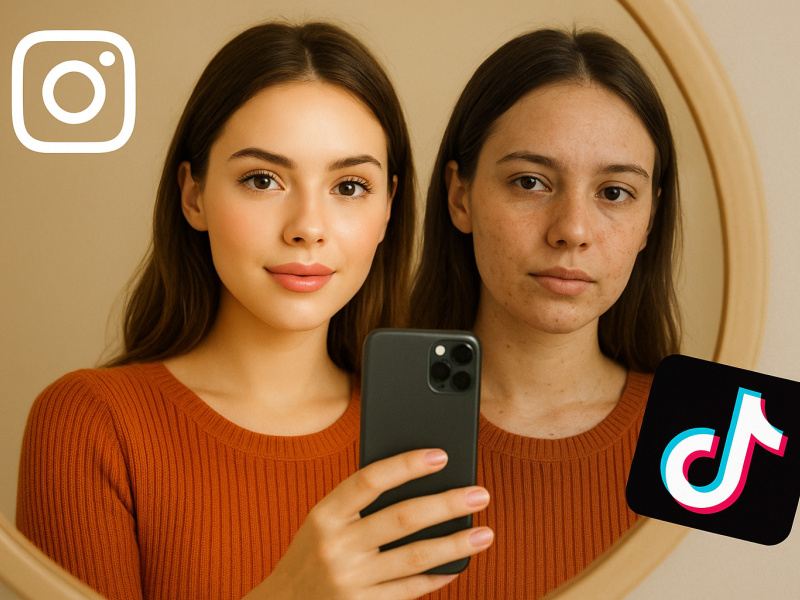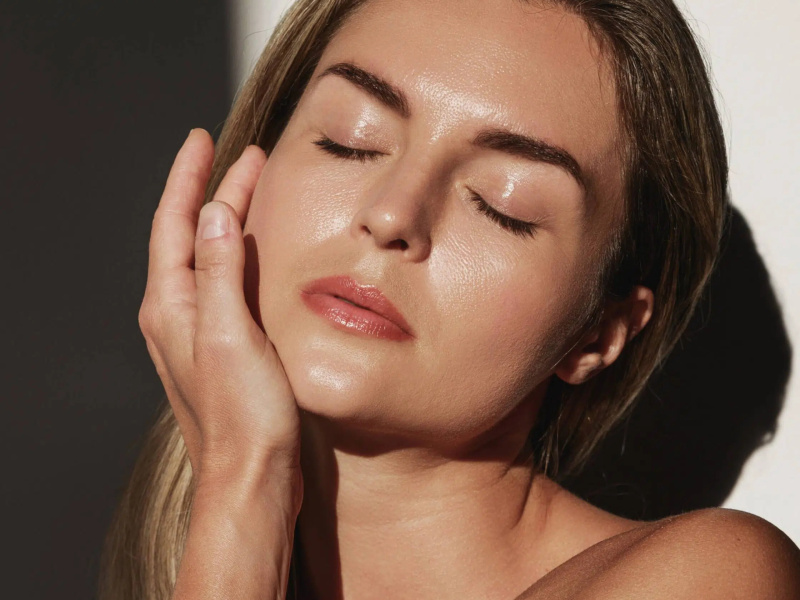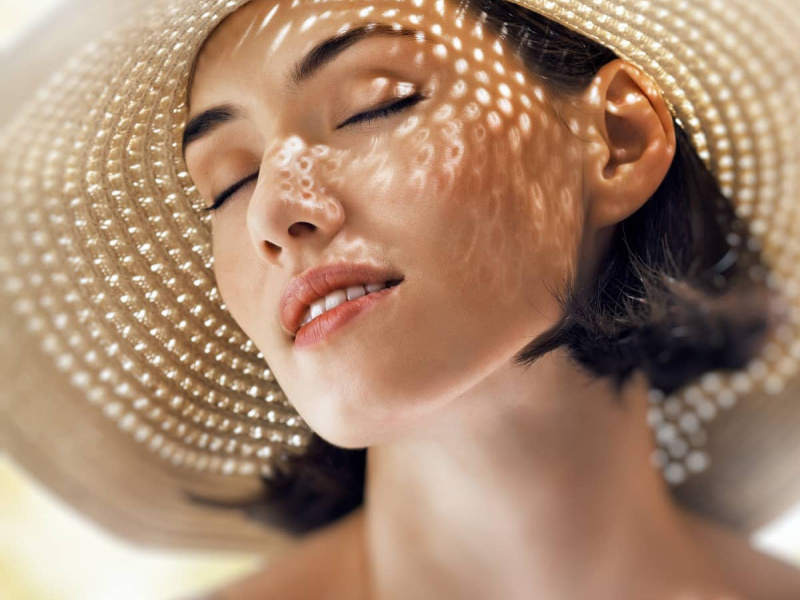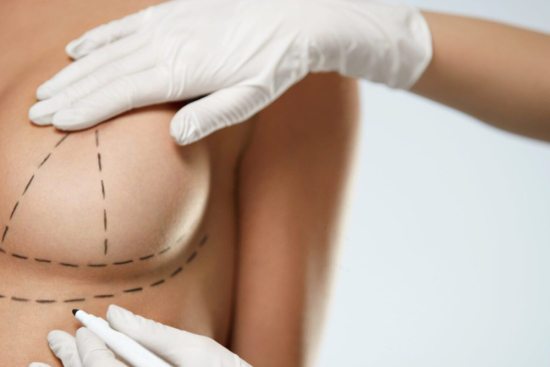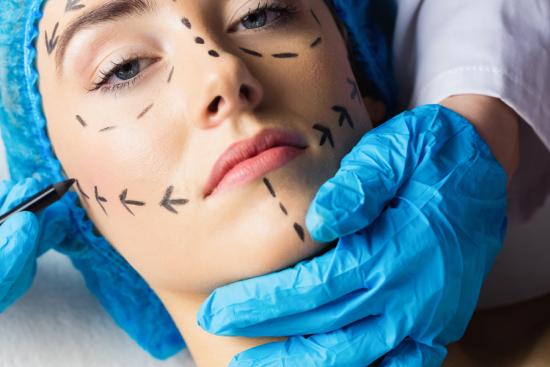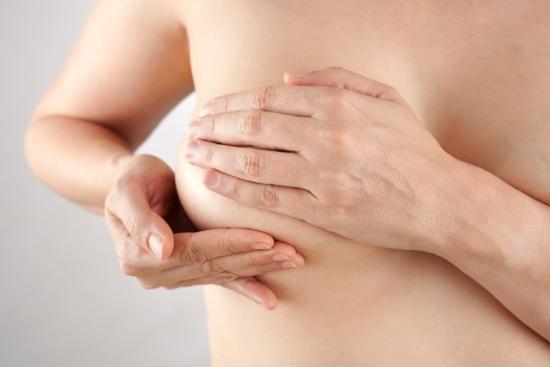Have you noticed small streaks on your breasts that are pink, purple, or white? Have you wondered where they come from, whether they'll disappear, or how to reduce them? Stretch marks on the breasts are very common. Fortunately, they don't have to be permanent.
Depending on each patient's wishes and needs, gentle medical and aesthetic solutions are available.
What are stretch marks on the breasts?
They are microtears in the skin caused by the rapid stretching of collagen and elastin fibers. On the breasts, stretch marks often appear as fine, slightly indented lines that are initially red or purple and turn white or pearly over time.
They may appear around the areola, on the lower part of the breast, or the sides. While stretch marks are not painful, they can be visually distracting and affect self-confidence.
Why do stretch marks appear on the breasts?
They generally appear when the skin is subjected to excessive or rapid tension that exceeds its natural elasticity. Several factors may be responsible.
Rapid weight gain or loss
A sudden change in breast volume can be caused by rapid weight gain or loss. The skin, particularly on the neckline, is thin and fragile with less elasticity, so it can tear deeply and reveal these raised marks.
Pregnancy and breast size
During pregnancy, hormones and lactation can cause the breasts to expand rapidly. The rapid stretching of the skin can lead to stretch marks, especially if the skin lacks suppleness or if the breasts are naturally large.
Hormonal changes
At puberty, during pregnancy, or with certain hormone treatments, fluctuations in hormones can disrupt collagen production, making the skin thinner and less elastic. Consequently, the skin becomes less resistant to stretching and stretch marks appear.
Collagen deficiency and skin aging
As we age, our skin produces less collagen, which is essential to its firmness and suppleness. Therefore, mature or tired skin is more prone to internal micro-tears, which favor the appearance of stretch marks, particularly around the breasts.
Genetic predisposition
Some women are simply more genetically predisposed to developing stretch marks. Skin that is naturally thin, dry, or lacking in elasticity can be more susceptible to stretch marks, even in the absence of significant weight fluctuations.
Breast surgery (implants, reduction, or lipofilling)
Cosmetic breast surgery (implants, reduction, or lipofilling) can also lead to stretch marks, especially if the skin has stretched excessively or if healing has been difficult.
Are stretch marks on the breasts normal?
The appearance of stretch marks on the breasts is common and normal. It's estimated that over 70% of women will develop stretch marks on their breasts at some point in their lives, whether during puberty, pregnancy, or due to weight changes.
Stretch marks are not dangerous and are not a sign of a health problem. They do not require emergency medical treatment. They are simply marks left by life and changes in the body.
Although they are natural, they can sometimes cause discomfort and affect self-confidence and self-image.
We're not here to judge or make you feel guilty; we're here to suggest solutions. What matters is that you feel good about yourself. Most importantly, you should be able to make a free, informed, and kind choice.
What can be done to reduce stretch marks on the breasts?
Good daily habits can make a real difference, especially if stretch marks are still fresh (pink or purple).
- Daily moisturizing: Well-nourished skin is more supple and can withstand stretching better. Apply a moisturizing cream or a rich vegetable oil, such as sweet almond oil, coconut oil, argan oil, or rosehip oil, which is known for its restorative properties.
- Gentle massage: Massaging the breasts regularly stimulates blood circulation, promotes elasticity, and improves the absorption of applied skincare products.
- A nutrient-rich diet: Zinc and vitamins A, C, and E, as well as omega-3, are essential for supporting collagen production, strengthening the skin, and helping it regenerate.
- Avoid sudden weight changes: Rapid weight gain or loss is one of the primary factors in skin fiber breakdown. Taking care of your body also means taking care of your skin.
- Avoid aggressive products: Choose gentle skincare products and light scrubs without abrasive microbeads that respect the sensitivity of the skin on your bust.
Aesthetic and medical treatments
If you have had stretch marks for a long time, or they bother you, professional treatments can provide real, visible results.
Here's what we offer at our partner clinics:
Microneedling
This treatment uses micro-needles to stimulate collagen and elastin production in the skin. Microneedling improves skin texture and elasticity, particularly on recent stretch marks that are still red or purplish.
Fractional laser
The non-ablative fractional laser treatment works deep within the skin to smooth it and fade the color of old, whitened stretch marks. Several sessions are often required, but the results are progressive and long-lasting.
PRP (platelet-rich plasma)
This treatment uses your plasma, which is rich in growth factors, to naturally regenerate the skin. It is often combined with microneedling to enhance results.
Mesotherapy
A mixture of vitamins, minerals, and hyaluronic acid is injected beneath the skin, aiming to firm, hydrate, and stimulate cell renewal. Mesotherapy is perfect for tired or thin skin.
Chemical peels
Appropriate exfoliating solutions are applied to the skin to promote renewal, smooth out irregularities, and reduce the visibility of stretch marks.
Cosmetic surgery
In certain severe cases, surgical intervention may be considered, particularly when it is part of an overall correction, such as a breast lift or reconstructive surgery. The most damaged skin can be removed or tightened.
Can stretch marks be completely removed?
Once they've set in, they can't disappear completely. They are micro-tears in the dermis that are comparable to small internal scars. No treatment, no matter how effective, can erase them completely. But that doesn't mean we have to resign ourselves to them.
Thanks to advances in aesthetic medicine, it's now possible to visibly reduce stretch marks, smooth skin texture, and restore a more even and toned appearance to the affected area. Treatments such as microneedling, fractional lasers, and PRP injections can stimulate collagen and elastin production for firmer, smoother skin.
With personalized support and the right techniques, you can achieve impressive results and make your stretch marks much less visible daily. Our goal is to help you feel better about yourself, giving you greater confidence and comfort without pressure or false promises.
Which treatment should I choose for my stretch marks?
The choice of treatment for stretch marks on the breasts depends on several important criteria:
- The age of the stretch marks: recent stretch marks (red or purplish) generally respond better to treatment.
- Your skin type: Every skin type reacts differently to treatments, so it's essential to assess your skin type.
- Your budget: Some treatments require several sessions and a greater investment.
- Your personal goal: Is it to reduce their visibility, smooth the skin, or rather learn to accept them gently?
The most important thing is to talk it over with a qualified professional who can help you create a personalized treatment plan adapted to your skin type and expectations.


